Automated Poultry Revolution: Lida Group Delivers Climate-Controlled Steel Farm Houses via Advanced Steel Structure Construction
2025-Aug-14 14:25:15
By Admin
1. Introduction
The global poultry industry is undergoing a profound transformation, driven by the growing demand for high – quality poultry products, evolving consumer expectations for animal welfare and food safety, and the need for more efficient and sustainable farming practices. As the industry expands, traditional poultry farming methods are facing increasing challenges, such as difficulty in maintaining optimal environmental conditions, high labor costs, and limited scalability. In this context, the emergence of automated and climate – controlled poultry housing has become a key trend, promising to address these issues and revolutionize the way poultry is raised. Lida Group, a leading player in advanced steel structure construction, is at the forefront of this revolution, delivering state – of – the – art climate – controlled steel farm houses that integrate automation and cutting – edge technology. This article explores the role of Lida Group in this automated poultry revolution, delving into the features, benefits, and impact of their climate – controlled steel farm houses.
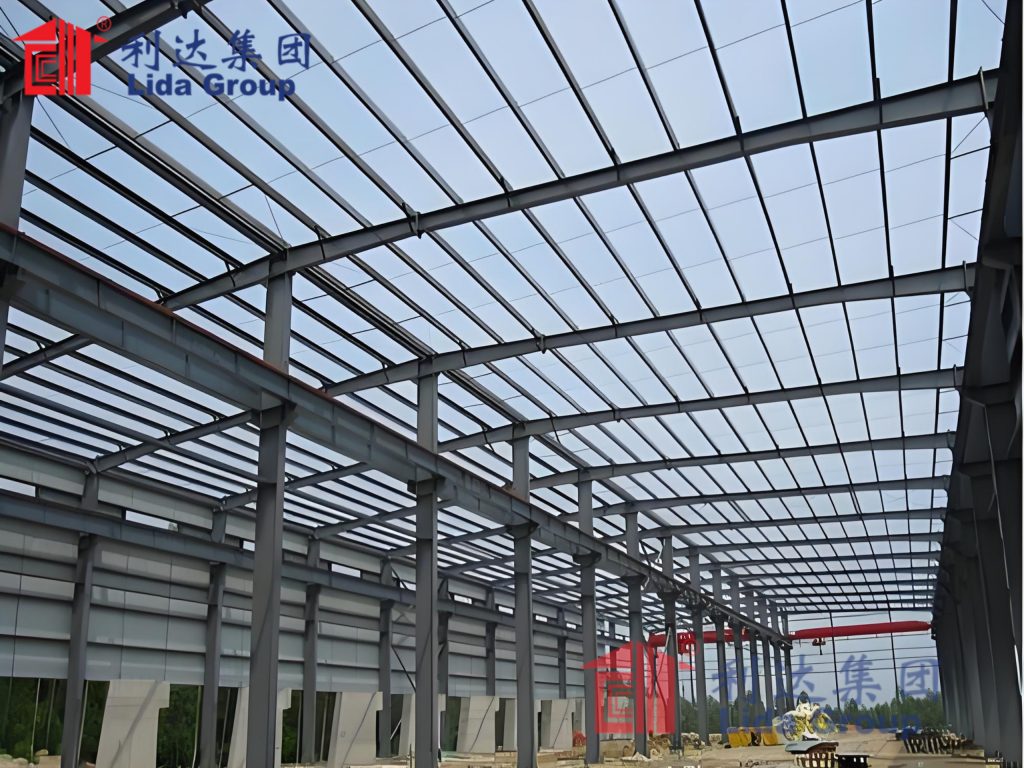
2. The Evolution of Poultry Farming and Its Current Challenges
2.1 From Traditional to Modern Poultry Farming
Poultry farming has come a long way from small – scale, backyard operations to large – scale commercial enterprises. In the past, poultry was primarily raised in simple, open – air structures, relying heavily on manual labor for feeding, watering, and cleaning. These traditional methods were often inefficient, with limited control over environmental factors such as temperature, humidity, and ventilation. As the demand for poultry products grew, the industry shifted towards more intensive farming systems, with larger flocks and more concentrated production facilities. However, even these systems have their limitations. They often struggle to provide a consistent and optimal environment for the birds, leading to issues such as poor growth rates, increased disease susceptibility, and lower egg production.
2.2 Key Challenges Facing the Poultry Industry Today
The modern poultry industry faces a range of challenges. One of the most significant is the need to maintain precise environmental conditions. Poultry is highly sensitive to changes in temperature, humidity, and air quality. Extreme temperatures, either too high or too low, can cause stress, reduce feed intake, and even lead to mortality. High humidity levels can promote the growth of bacteria and fungi, increasing the risk of disease outbreaks. Inadequate ventilation can result in the accumulation of ammonia and other harmful gases, which are detrimental to both the birds’ health and the quality of the poultry products.
Labor costs are another major challenge. Traditional poultry farming requires a large workforce to perform tasks such as feeding, collecting eggs, cleaning the housing, and monitoring the birds’ health. With rising labor costs around the world, this has become a significant financial burden for poultry farmers. Moreover, manual labor is prone to errors and inconsistencies, which can affect the quality and efficiency of the farming operation.
Food safety and animal welfare are also growing concerns. Consumers are increasingly demanding that poultry products are produced in a safe and humane manner. This includes ensuring that the birds are raised in clean, comfortable environments, with access to proper nutrition and healthcare. Failure to meet these standards can lead to reputational damage and loss of market share for poultry producers.
Sustainability is another key issue. The poultry industry has a significant environmental footprint, including greenhouse gas emissions, water usage, and waste generation. There is a growing pressure on the industry to adopt more sustainable practices to reduce its impact on the environment.

3. Lida Group’s Expertise in Advanced Steel Structure Construction
3.1 A Legacy of Innovation in Steel Structures
Lida Group has a long and distinguished history in the field of steel structure construction. With decades of experience, the company has established itself as a leader in developing and implementing advanced steel structure solutions for a wide range of industries, including agriculture, industrial, commercial, and residential. Lida Group’s expertise lies in its ability to design and construct steel structures that are not only strong, durable, and cost – effective but also highly customizable to meet the specific needs of its clients.
The company’s team of engineers, architects, and construction professionals are highly skilled and experienced, using the latest design software and construction techniques to ensure that each project is delivered to the highest standards. Lida Group is committed to innovation, constantly investing in research and development to explore new materials, technologies, and construction methods that can improve the performance and sustainability of its steel structures.
3.2 Advantages of Steel Structures in Agricultural Applications
Steel structures offer numerous advantages for agricultural applications, making them an ideal choice for poultry housing. One of the key advantages is their strength and durability. Steel is a highly robust material that can withstand harsh weather conditions, such as strong winds, heavy rain, and snow, ensuring the safety and security of the poultry. Unlike traditional building materials such as wood, steel is not susceptible to rot, termites, or other forms of decay, which means that steel structures have a longer lifespan and require less maintenance.
Steel structures are also highly customizable. They can be designed to meet the specific size and layout requirements of poultry farms, allowing for efficient use of space and easy integration with automation systems. The flexibility of steel structures makes it possible to expand or modify the housing as the farm grows, providing scalability for the business.
In addition, steel structures are environmentally friendly. Steel is a recyclable material, and many steel structures are made from recycled content, reducing the environmental impact of the construction process. Steel structures also have a low carbon footprint compared to other building materials, as they require less energy to produce and transport.
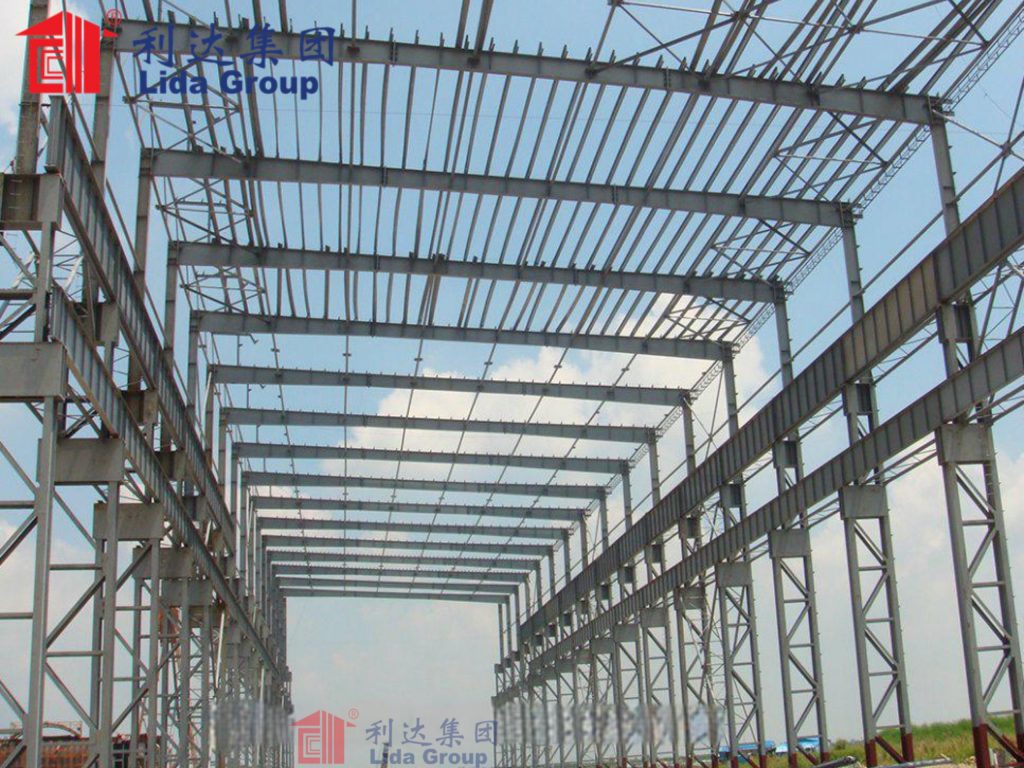
4. Climate-Controlled Steel Farm Houses: Features and Technology
4.1 Precision Climate Control Systems
Lida Group’s climate – controlled steel farm houses are equipped with advanced precision climate control systems that ensure optimal environmental conditions for the poultry. These systems are designed to monitor and regulate temperature, humidity, ventilation, and air quality in real – time.
Temperature control is crucial for poultry health and productivity. The climate control systems use a combination of heating, cooling, and insulation to maintain a constant temperature within the housing, regardless of the external weather conditions. For example, during hot weather, the systems can activate fans, evaporative coolers, or air conditioning units to lower the temperature, while in cold weather, they can use heaters to keep the temperature within the optimal range.
Humidity control is also essential. The systems monitor the humidity levels and adjust them as needed, using dehumidifiers or humidifiers to prevent excessive moisture or dryness. This helps to reduce the risk of disease and improve the birds’ comfort.
Ventilation is another key component of the climate control system. The systems ensure a constant supply of fresh air into the housing, removing stale air, ammonia, and other harmful gases. This is achieved through the use of fans, vents, and air circulation systems that distribute the air evenly throughout the housing.
4.2 Integration of Automation Systems
Lida Group’s climate – controlled steel farm houses are fully integrated with automation systems, which streamline and optimize the poultry farming process. These automation systems cover a range of tasks, including feeding, watering, egg collection, and waste management.
Feeding automation systems ensure that the poultry receive the right amount of feed at the right time. The systems are equipped with sensors that monitor the feed levels in the troughs, and automatically dispense feed when needed. This not only saves labor but also ensures that the birds have a consistent supply of high – quality feed, improving their growth and productivity.
Watering automation systems work similarly, providing a continuous supply of clean water to the poultry. The systems can monitor water quality and consumption, alerting farmers to any issues such as leaks or contamination.
Egg collection automation systems are designed to collect eggs efficiently and hygienically. The systems use conveyor belts or robotic arms to collect the eggs from the nesting boxes and transport them to a central collection point, reducing the risk of damage or contamination.
Waste management automation systems help to keep the housing clean and hygienic. The systems can automatically remove manure from the housing, either through conveyor belts or scrapers, and transport it to a storage or treatment facility. This reduces the need for manual cleaning and helps to prevent the buildup of harmful bacteria and odors.
4.3 Structural Design for Optimal Poultry Health and Productivity
The structural design of Lida Group’s climate – controlled steel farm houses is carefully engineered to promote optimal poultry health and productivity. The housing is designed to provide ample space for the birds to move around, with proper lighting and ventilation to create a comfortable environment.
The layout of the housing is designed to facilitate easy movement of the birds and efficient operation of the automation systems. For example, the feeding and watering systems are strategically placed to ensure that all birds have access, and the egg collection systems are positioned to minimize disturbance to the birds.
The materials used in the construction of the housing are also chosen with poultry health in mind. The steel structures are coated with non – toxic, anti – corrosion materials to prevent the growth of bacteria and ensure a clean environment. The flooring is designed to be easy to clean and non – slip, reducing the risk of injury to the birds.
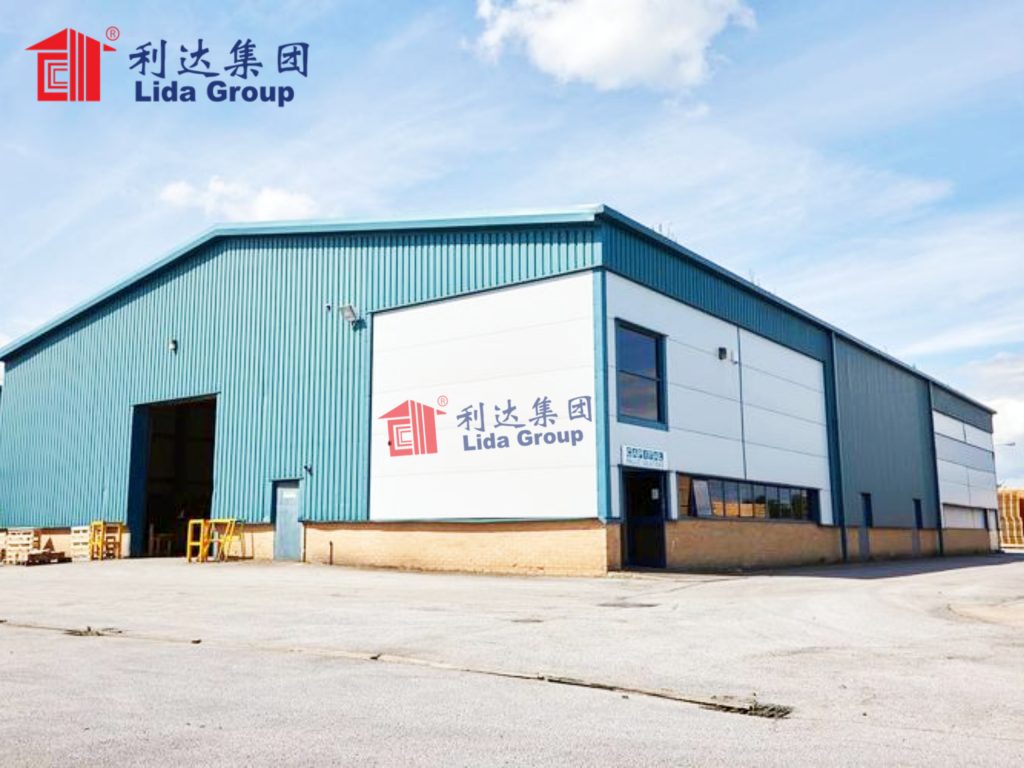
5. Benefits of Lida Group’s Automated Climate-Controlled Steel Farm Houses
5.1 Improved Poultry Health and Welfare
One of the most significant benefits of Lida Group’s automated climate – controlled steel farm houses is the improvement in poultry health and welfare. The precise climate control systems ensure that the birds are raised in a stable and comfortable environment, reducing stress and the risk of disease. The optimal temperature, humidity, and air quality promote better growth and development, leading to healthier birds.
The automation systems also contribute to better animal welfare. By reducing the need for manual handling, the systems minimize stress on the birds. The consistent feeding and watering ensure that the birds have access to the resources they need, when they need them, improving their overall well – being.
5.2 Enhanced Productivity and Quality of Poultry Products
The improved health and welfare of the poultry translate into enhanced productivity and quality of poultry products. Healthy birds grow faster and have higher feed conversion rates, meaning that they produce more meat or eggs per unit of feed consumed. This increases the efficiency of the farming operation and reduces costs.
The controlled environment also helps to improve the quality of the poultry products. For example, eggs produced in a clean, temperature – controlled environment are less likely to be contaminated and have a longer shelf life. Meat from healthy birds is of higher quality, with better texture and flavor.
5.3 Reduced Labor Costs and Increased Efficiency
Automation is a key driver of reduced labor costs and increased efficiency in Lida Group’s steel farm houses. The automation systems handle many of the tasks that were previously done manually, such as feeding, watering, and egg collection, reducing the need for a large workforce. This not only saves money on labor but also reduces the risk of human error, ensuring that the farming operation runs more smoothly.
The climate control systems also contribute to increased efficiency by optimizing the environmental conditions, which reduces the amount of energy and resources needed to maintain the housing. For example, the precise temperature control ensures that heating and cooling systems are only used when necessary, reducing energy consumption.
5.4 Sustainability and Environmental Benefits
Lida Group’s automated climate – controlled steel farm houses offer several sustainability and environmental benefits. The use of steel, a recyclable material, reduces the environmental impact of the construction process. The automation systems help to reduce waste, as feed and water are dispensed precisely, minimizing overuse.
The climate control systems are also designed to be energy – efficient, using renewable energy sources where possible, such as solar panels, to power the systems. This reduces the carbon footprint of the farming operation and helps to mitigate the effects of climate change.
In addition, the waste management systems in the steel farm houses help to reduce the environmental impact of poultry farming. The efficient removal and treatment of manure can turn it into a valuable fertilizer, reducing the need for chemical fertilizers and closing the nutrient loop.
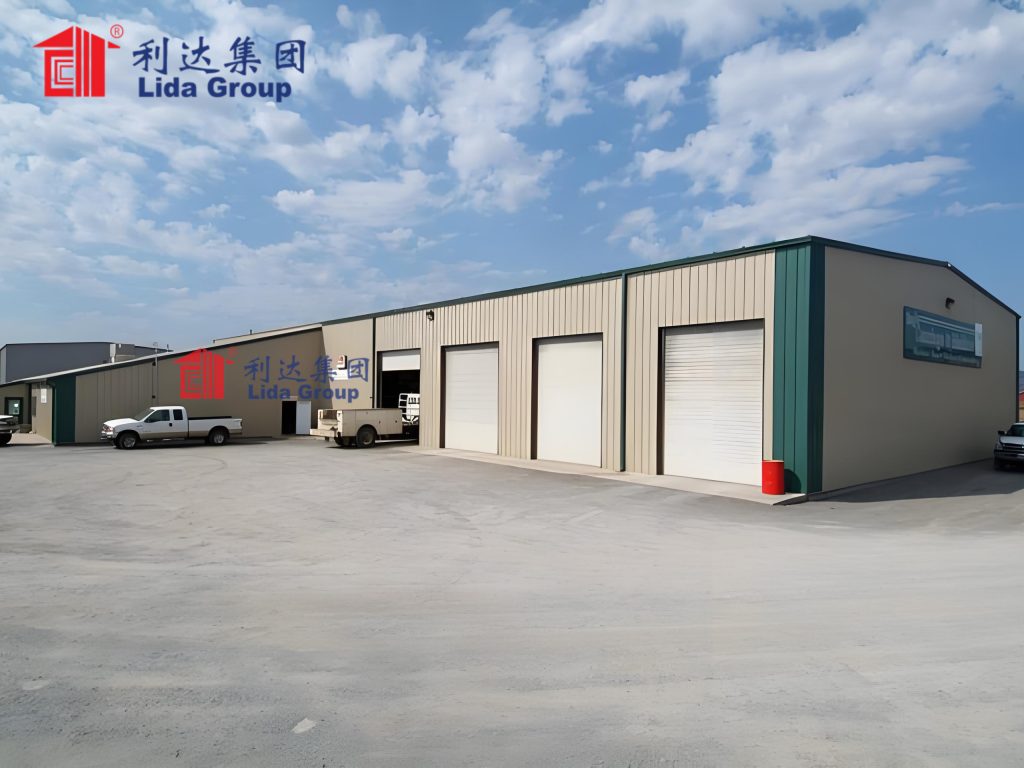
6. Case Studies: Successful Implementation of Lida Group’s Systems
6.1 Large-Scale Poultry Farms
In a large – scale poultry farm in a major agricultural region, the implementation of Lida Group’s automated climate – controlled steel farm houses has led to significant improvements in productivity and efficiency. The farm, which previously used traditional housing, was struggling with high labor costs and inconsistent environmental conditions. After installing Lida Group’s systems, the farm saw a 20% increase in egg production and a 15% reduction in feed costs. The automation systems reduced the need for manual labor by 50%, and the climate control systems ensured that the birds were raised in optimal conditions, reducing mortality rates by 10%.
6.2 Small to Medium-Sized Poultry Operations
Even small to medium – sized poultry operations have benefited from Lida Group’s systems. A family – owned poultry farm that was looking to expand its business invested in Lida Group’s climate – controlled steel farm houses. The new housing allowed the farm to increase its flock size by 50% without a significant increase in labor costs. The automation systems made it easier to manage the larger flock, and the climate control systems ensured that the birds remained healthy and productive. The farm reported a 25% increase in profits within the first year of operation.
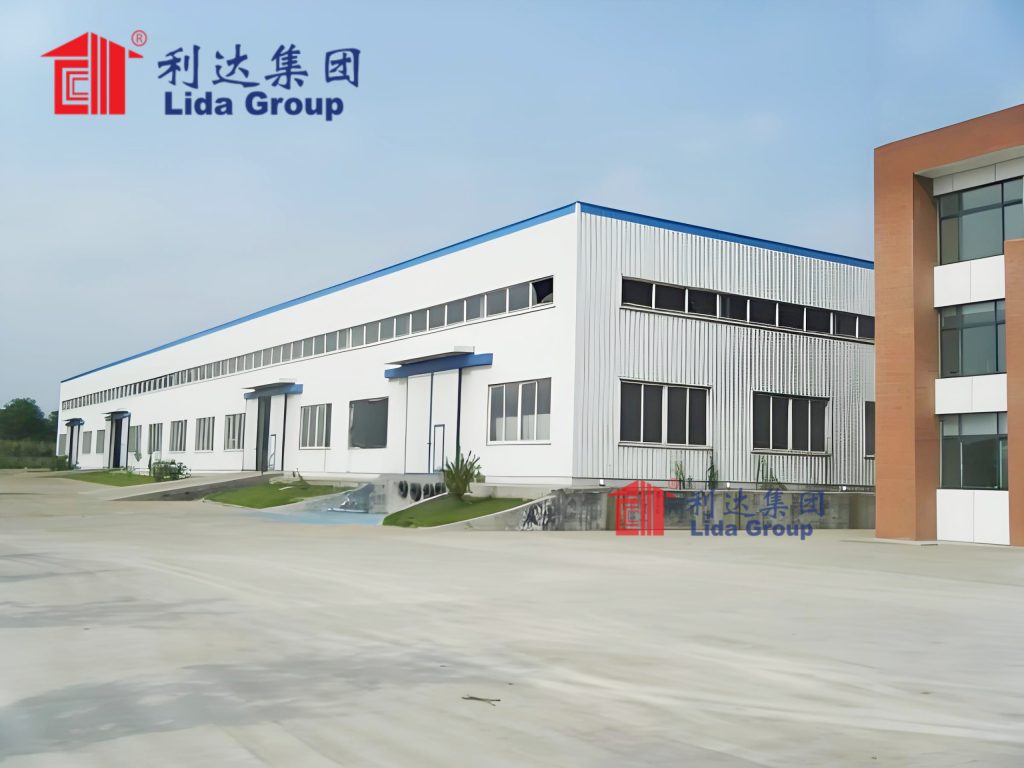
7. Future Developments and Innovations in Automated Poultry Housing
7.1 Advancements in Sensor Technology and Data Analytics
The future of automated poultry housing will see significant advancements in sensor technology and data analytics. Sensors will become more sophisticated, able to monitor a wider range of parameters, such as the birds’ behavior, health, and feed intake. This data will be collected and analyzed using advanced algorithms to provide farmers with real – time insights into the performance of their flocks. Farmers will be able to use this information to make more informed decisions, such as adjusting the climate control settings, modifying the feed 配方,or identifying and treating sick birds early.
7.2 Integration of Artificial Intelligence and Machine Learning
Artificial intelligence (AI) and machine learning (ML) will play an increasingly important role in automated poultry housing. AI – powered systems will be able to learn from the data collected by sensors and make autonomous decisions to optimize the farming operation. For example, ML algorithms could predict when the birds are likely to lay eggs, adjusting the lighting and feeding schedules to maximize egg production. AI could also be used to detect and diagnose diseases in the birds, based on changes in their behavior or 生理指标,allowing for early intervention.
7.3 Expansion of Sustainable Practices
Sustainability will remain a key focus for future developments in automated poultry housing. Lida Group and other companies in the industry will continue to explore ways to reduce the environmental impact of poultry farming, such as increasing the use of renewable energy, improving waste management systems, and developing more sustainable feed sources. For example, the integration of solar panels into the steel farm houses could provide a reliable source of renewable energy, reducing dependence on fossil fuels.
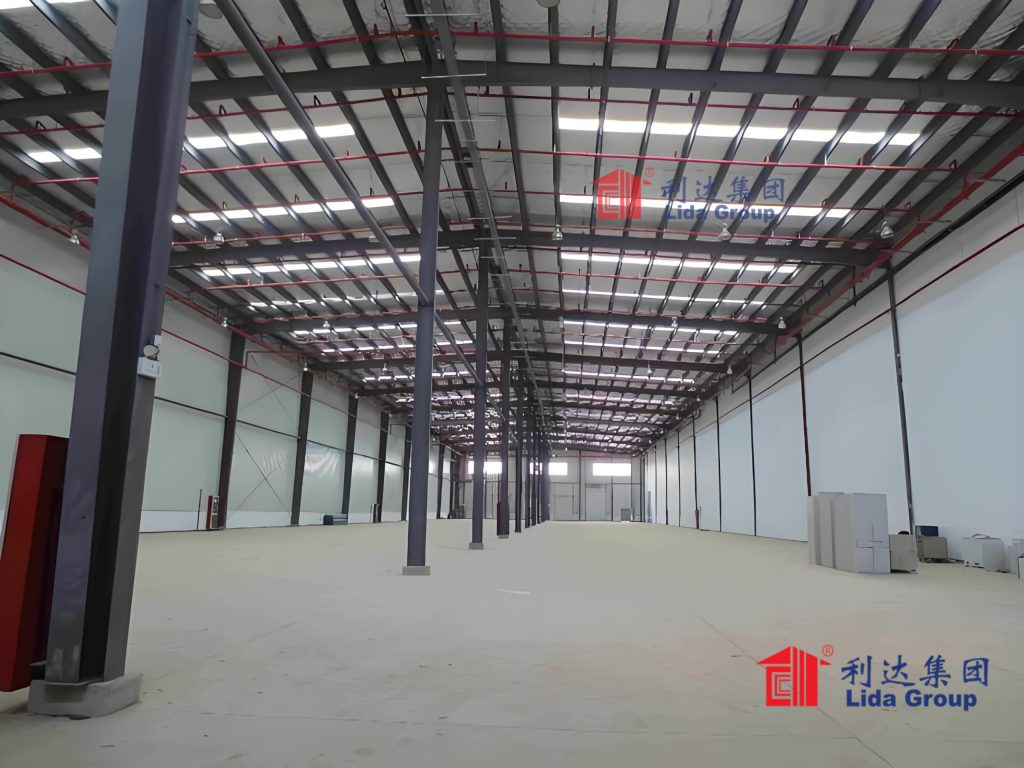
8. Conclusion
The automated poultry revolution is well underway, and Lida Group is leading the way with its climate – controlled steel farm houses built using advanced steel structure construction. These innovative housing solutions address the key challenges facing the poultry industry, providing precise climate control, seamless integration with automation systems, and a durable, customizable structure that promotes optimal poultry health and productivity.
The benefits of Lida Group’s systems are clear: improved poultry health and welfare, enhanced productivity and product quality, reduced labor costs, increased efficiency, and significant sustainability benefits. Case studies from both large – scale and small to medium – sized poultry operations demonstrate the tangible impact of these systems, highlighting their ability to transform the poultry farming industry.
Looking to the future, the continued advancement of sensor technology, data analytics, AI, and machine learning, along with a focus on sustainability, will further enhance the capabilities of automated poultry housing. Lida Group’s commitment to innovation and excellence positions it to remain at the forefront of this revolution, delivering cutting – edge solutions that meet the evolving needs of the poultry industry.
In conclusion, Lida Group’s automated climate – controlled steel farm houses represent a major step forward in poultry farming, offering a sustainable, efficient, and humane way to raise poultry. As the demand for high – quality poultry products continues to grow, these systems will play an increasingly important role in ensuring the success and sustainability of the global poultry industry.
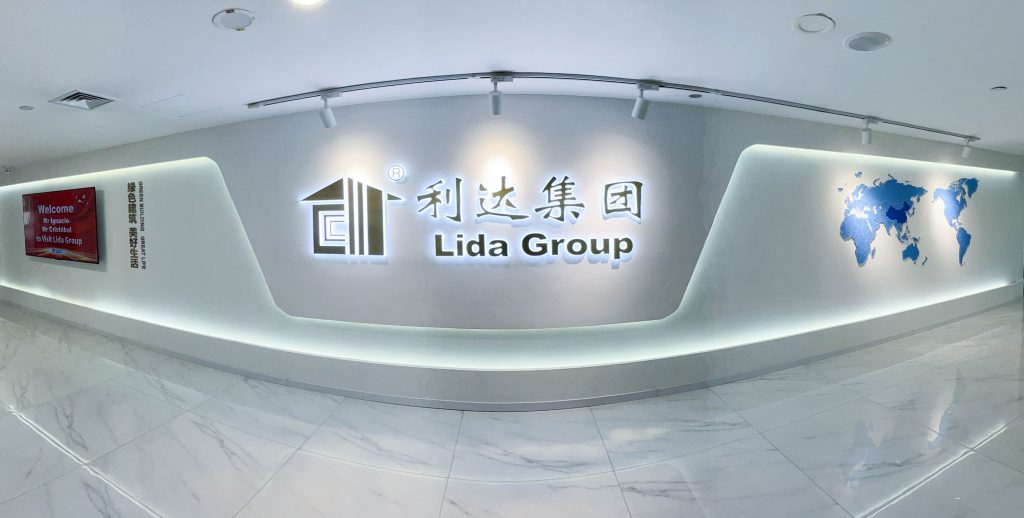
Related news
-
Hurricane-Resistant Farm Innovation: Steel Frame Building Systems from Lida Group Protect High-Quality Agricultural Assets
2025-08-14 13:34:43
-
Lida Group Elevates Cold Chain Logistics with High-Quality Steel Warehouses Using Robot-Assisted Steel Structure Construction
2025-08-14 10:48:33
-
Future-Proof Remote Worksites: Lida Group Integrates Solar Tech into Mobile Houses via Advanced Sandwich Panel Construction
2025-08-08 11:46:06
contact us
- Tel: +86-532-88966982
- Whatsapp: +86-13793209022
- E-mail: sales@lidajituan.com


